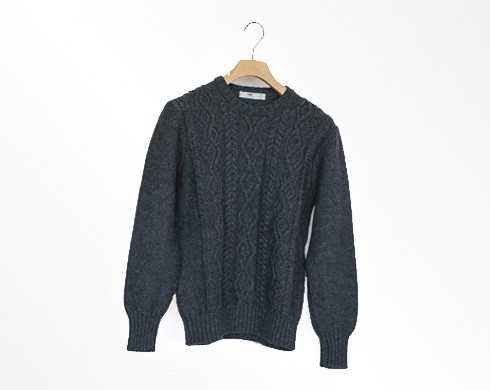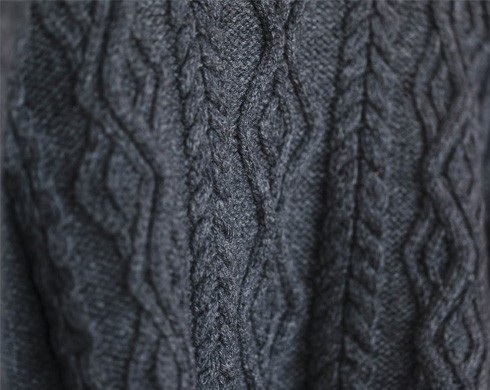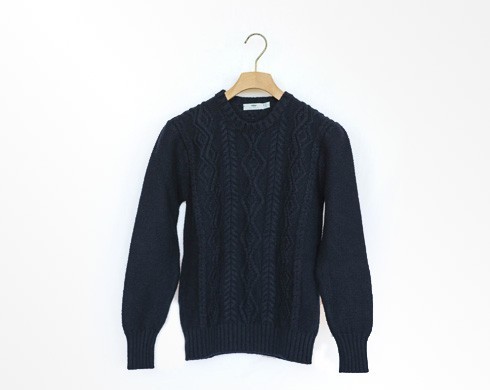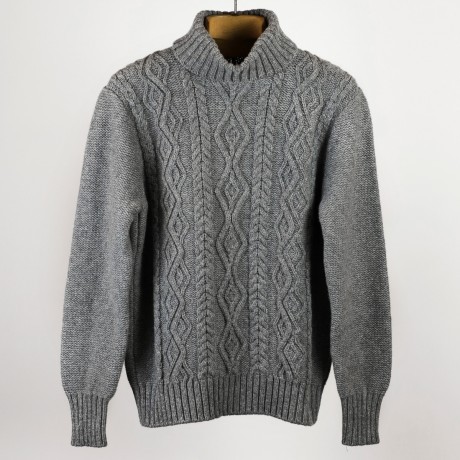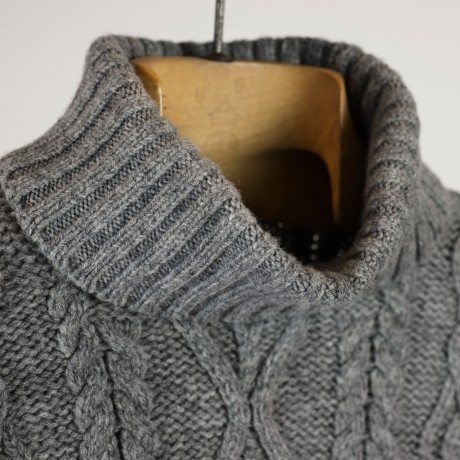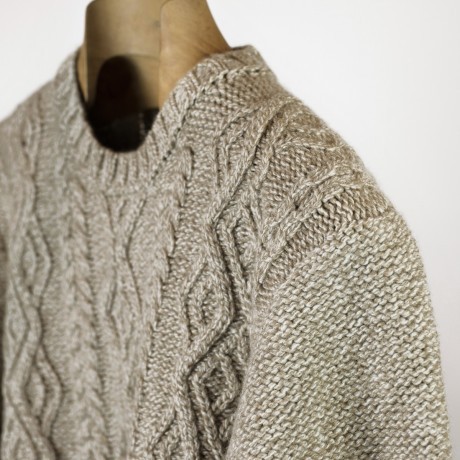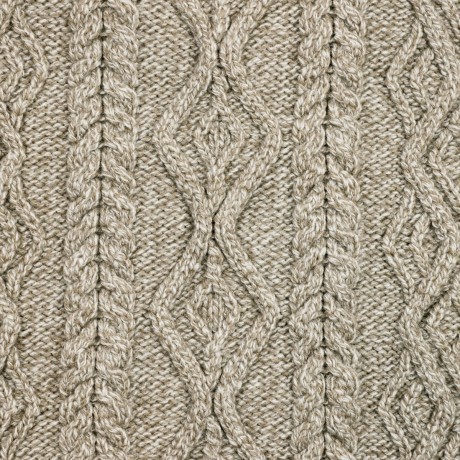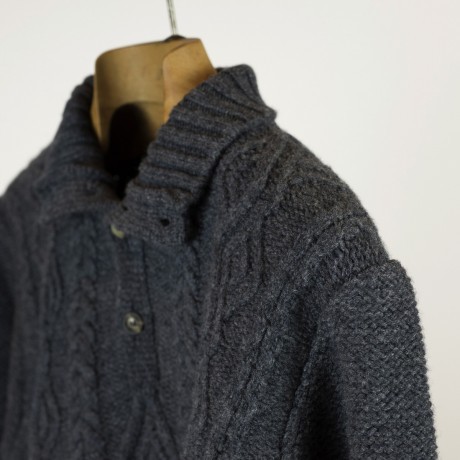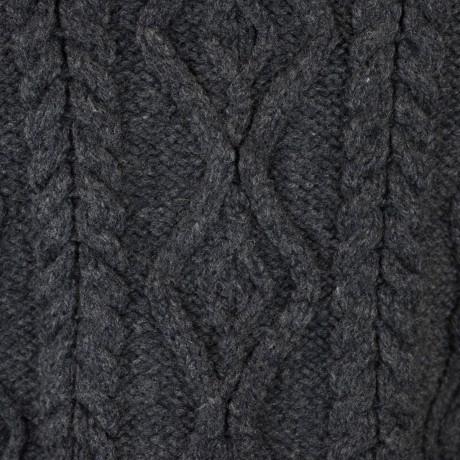
The Irish knitwear brand O’Maille has an interesting section on their website explaining the different meanings behind Aran sweater stitches. Arans are densely patterned, vertically paneled, cable knits, typically produced from a heavy yarn made from an undyed, off-white wool known as bainin. The sweaters are classically associated with the Aran Islands, which is of course where they take their name.
According to O’Maille, simple cable stitches represent fishing ropes, while more complex ones symbolize the interweaving of family life. Health and success are represented through the moss stitch (made to evoke the image of abundant growth in mossy soil), diamond stitches (made to reflect fishing net mesh), and honeycomb stitches. Finally, trinity and blackberry stitches are said to have ancient religious connotations, while lobster claw, spoon,and basket stitches are symbolic of the life of knitters.
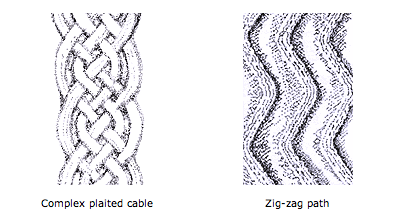
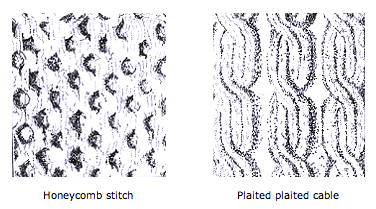

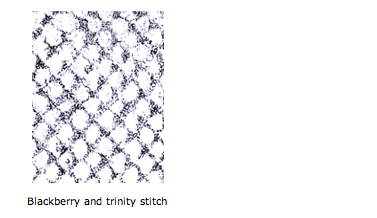
A quick look around will bring up many sources that say similar things, but one should be careful about buying too much into these mythologies. Contrary to popular belief, these sweaters are not part of the Islands’ traditional dress. Instead, they were a fashion item that came out of the 20thcentury, likely as part of the Republic of Ireland’s push in the 1930s for home-produced crafts. The meaning behind the stitches came from a German writer named Heinz Keiwe, who “discovered” some early prototypes and decided to wax rhapsodic about them in an article published in 1938, where he wrote about the ancient Celtic influences he supposedly found. Keiwe had never been to the Islands, however, nor ever met anyone who had knitted a sweater. Still, his work was widely accepted and later writers felt free to embellish and expand (early form of bloggers?). Even the often-told story that these knitshave been used to identify poor, lost fishermen drowned at sea likely came from John Millington Synge’s 1904 play Riders to the Sea, where some fisherman was identified by a sock with dropped stitches. Of course, sellers of such sweaters have never felt compelled to contradict any of this marketing magic, so these mythologies continue.
Whether the sweaters hold traditional meanings or not, I still like to wear mine with ribbed corduroy trousers and heavy twill chinos. The best I’ve found have all come from Inis Meain, which you can buy from No Man Walks Alone, Barney’s, A Suitable Wardrobe, Inis Meain themselves, and (soon) The Hanger Project. Those will be made from softer wool-cashmere mixes, rather than the scratchier bainin varieties you’ll find elsewhere.
(Photos via Inis Meain and No Man Walks Alone)

